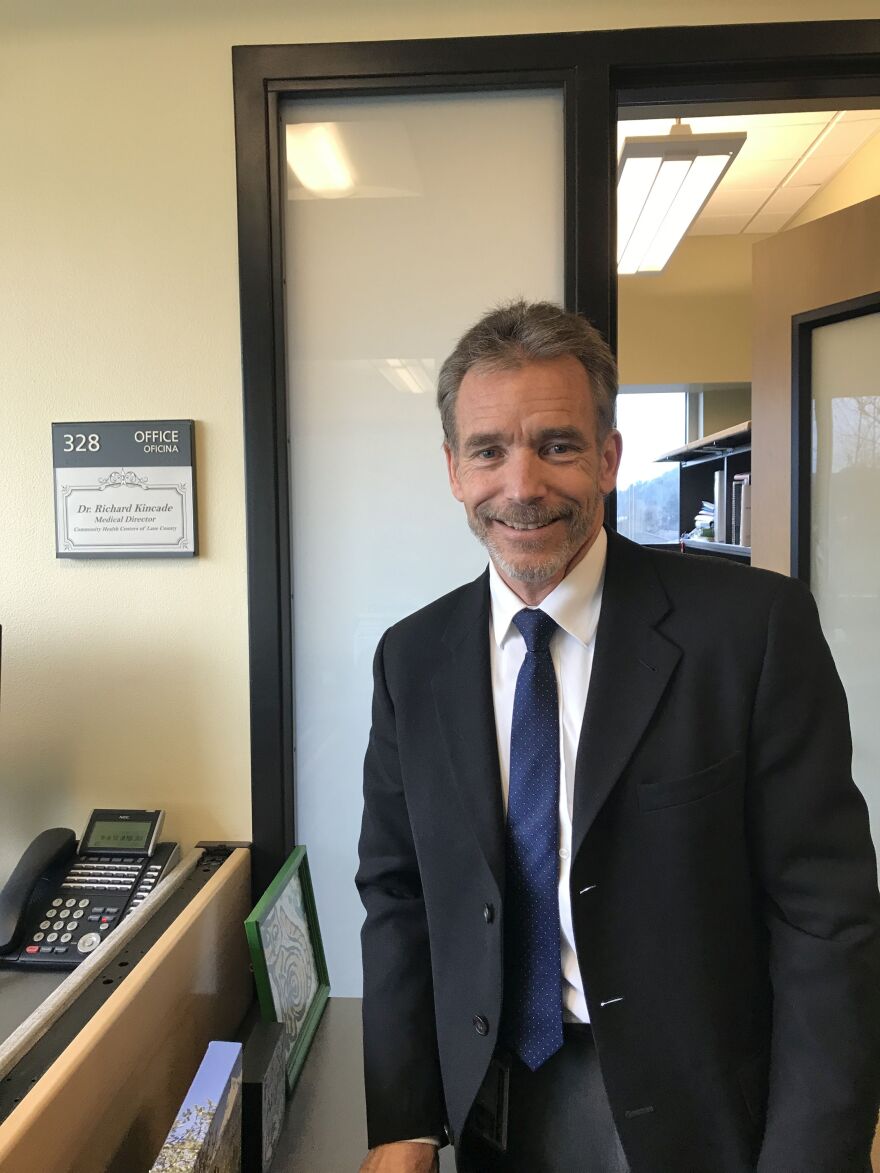In Lane County, opioid overdose kills more people than car accidents. It’s a crisis public health officials have seen coming. Now, a countywide effort to reduce narcotic prescribing is having dramatic results—cutting opioid use by 40%. It comes down to tapering dosage and offering patients alternative treatments for chronic pain.
(Please see additional interview segments at bottom of this page)
A few years ago—Susan Price was heading down the rabbit hole.
“My previous doctor was giving me 60-120 oxycodone a month,” says Price. “He says ‘if it doesn’t work, take two, take three.’ I got to the point where I knew something was gonna’ break.”
Price is a 46 year old single mother in Springfield. Her list of ailments is long: Diabetes, hypothyroidism, Fibromyalgia, migraines. Price is also a survivor of domestic abuse.
“Beatings, being raped,” she says. “A lot of my pain comes from degenerative discs, herniated discs that he caused both in my neck and back.”

She got away from her abusive partner but the pain remained. Price says, for years, doctors only considered prescribing narcotics to treat her.
“It’s been a mess,” says Price. “Because once you start a drug or a series of drugs the effects that it has on your body and needing to take more drugs to counter effect those effects. It just snowballs.”
Price’s health issues are compounded by the fact that she is the sole caregiver of two special needs children. Both her daughters experience autism. Erin is 14 years old.
“It is really scary seeing your mom in that much pain all day, all the time,” says Erin. “There’s not a lot she can do and there’s not a lot you can do.”
Price felt her daughter’s helplessness. And a little guilt.

“Sometimes it feels like us patients, it’s all our fault,” Price says. “It’s our fault that we’re hurt, that we’re broken and that we actually need this medication.”
Dr. Rick Kincaid is the director of Community Health Centers of Lane County. He understands how patients like Price get into this position.
“Many are entirely innocent,” says Kincaid. “They have no intention of becoming dependent on these medicines.”

Lane County’s Community Health Centers take care of some 30,000 medically vulnerable residents. Most are uninsured and live at or below poverty. Last year, the health providers actively sought to decrease or completely eliminate the use of opiate prescribing for certain types of pain. Now, Kincaid says he and his team address what drives the pain.
“Many people struggle with stress, and depression and challenges with anxiety, issues that they have in their family that are very, very significant,” he says.
Kincaid acknowledges that certain opioids are very effective and when patients need them they should get them. At CHC of Lane County, the effort is to keep the prescribed amount at the lowest dose possible. Tapering an opioid dosage must happen slowly to help the body adjust.

“We’re starting to very carefully lower doses,” says Dr. Kincaid. “Very gradually so people don’t withdraw.”
It’s working. Lane County has seen a 40% reduction in the total number of patients taking opiates. Kincaid says many are now using other approaches to treat their pain.
“We’ve started acupuncture and we do mindfulness and yoga, water therapy, just movement can decrease our pain much more than a pill can,” he says.
After years of pain and living in an opiate fog, Susan Price figured this out too.

“I went completely cold turkey,” Price says. “After being on several pills every 4 or 5 hours went cold turkey to nothing.”
Price credits her new primary care doctor, a naturopath in Eugene, who went through her medications and helped her get off of several. She has taken up meditation and even invested in a zero gravity chair. Daughter Erin shows how it works.
“It looks kinda like a lawn chair,” Erin says. “But then you lean back in it and it aligns your body in such a way that it makes you feel like you’re floating.”
Susan Price now lives a different kind of life. Under the Oregon Health Plan Price has been approved for ongoing acupuncture treatment. It isn’t always easy…
“Sometimes even with the acupuncture, there are days that are still very dark and I really wish I had something to see me through,” Price says. “But then I think, ‘I have 4 more days til my next treatment. I can make four days.’”
She also practices mindfulness.
“Getting to know my body and allowing it to hurt,” says Price. “It is okay, this is how it is now and going with it. I think that finally allows those walls to come down and teaching yourself ways to cope.”

Price has taken responsibility for her treating her chronic pain. A doctor may have over-prescribed opioids to her years ago, but another doctor helped her find a way to get off them.
Last month, Oregon Governor Kate Brown declared addiction a public health crisis. The Community Health Centers of Lane County have shared the results of their opiate prescription reduction effort with high hopes it will be replicated around the state.

Web Extra
Dr. Rick Kincaid expains how some Community Health Center of Lane County patients have succeeded in reducing or completely eliminating the use of opiates. Tapering and Morphine Equivalent Dosage are described below:







